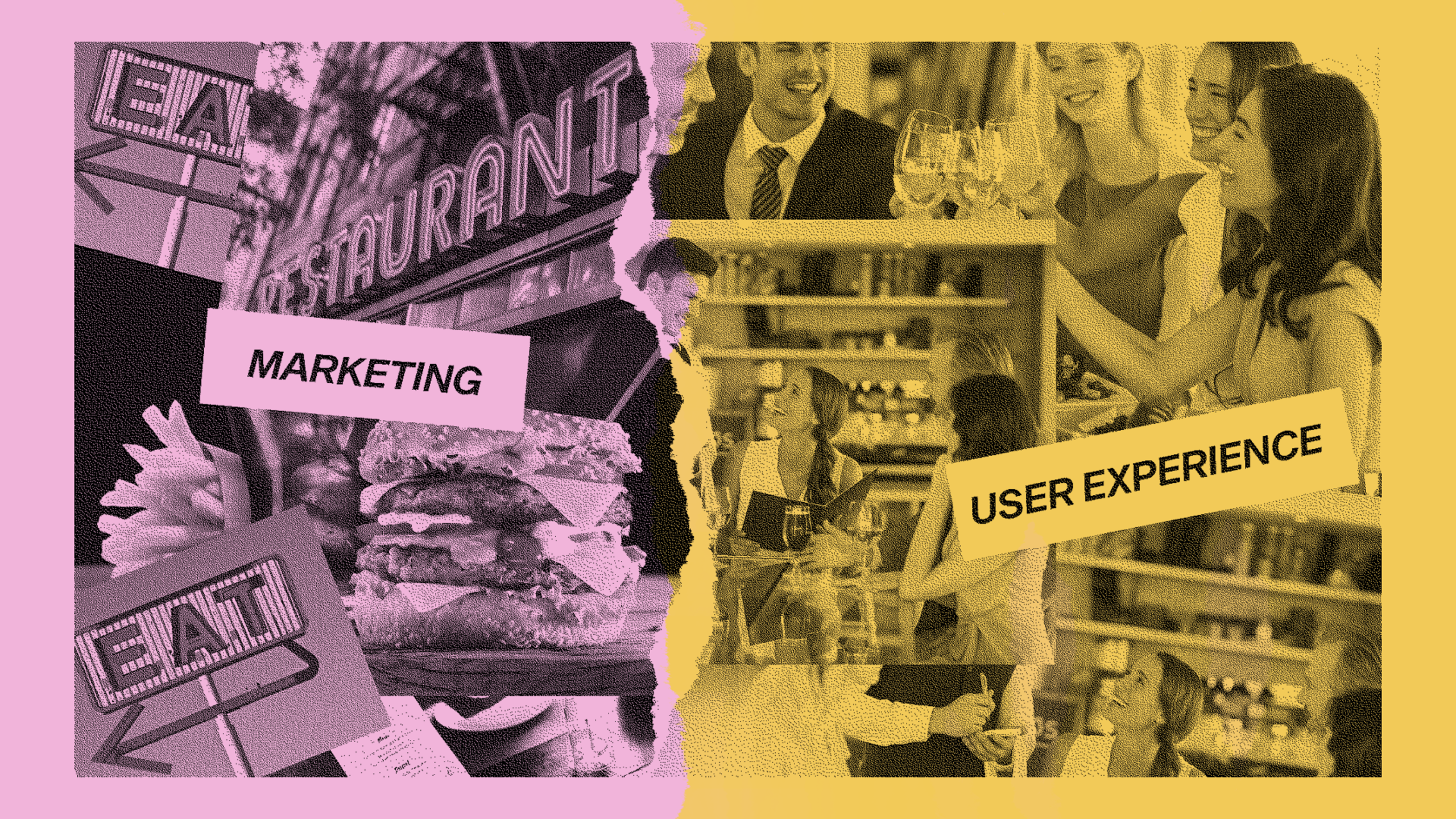
The Difference Between Designing for Users vs. Designing for Marketing
A few decades ago it actually meant something to describe your company as an “internet business.” The web hadn’t proliferated beyond expensive, behemoth machines in research institutions, and the potential of vast, worldwide connectivity wasn’t yet understood.
Boy, have times changed.
Nowadays, businesses depend on the internet to survive in the same way automobiles depend on fuel. Calling yourself an “internet business” would sound ridiculous, since everyone from Wall Street investment firms to your artsy neighbor shows up online slinging their wares or marketing their skills.
“Standing out” has always been a priority in advertising and marketing, and a swell in competition has companies earmarking enormous budgets for marketing. But customers don’t just care how you look and sound, they expect good design. It’s the first step in pulling interested buyers into your conversion cycle. That’s what marketing design is.
But once you’ve enticed a customer to buy, how do you keep them coming back?
A user’s interaction with your product or service is rarely transactional, which means there are dozens (if not hundreds) of touchpoints where they’ll have some kind of experience with your business. Each of these experiences is an opportunity to impress the customer, help them take an action, and/or remind them of your value.
This brings us to an important distinction: designing for marketing versus designing for users. As we discussed earlier, marketing designers are primarily concerned with catching eyes, telling stories, and driving sales. On the other hand, designing for users focuses on the actual experience of interacting with your product or service.
Consider a restaurant. If marketing design is all about the signage, menus, and advertisements, then user experience design scrutinizes the entire dining experience: the parking, the host stand, the ambiance, the music, the reservation process, ordering, meal delivery, etc. This is probably the reason you prefer certain restaurants over others, even if their menus are fairly similar. The food might be amazing, but if the service is poor (a primary experience touchpoint), then you probably won’t return.
Unfortunately, “designer” has become a bit of a catch-all term for anyone who plans how something will look and/or function before it’s built, so many businesses end up hiring the wrong skills for the job.
Here are some distinctions that will help you decide what kind of designer you need:
Marketing designers can help you…
- Attract more customers
- Explain what you do more clearly
- Appear more modern
- Stand out from competitors
Engagement with marketing design is predominantly passive. Information is read and absorbed, but users rarely interact with it.
UX designers can help you…
- Retain customers
- Make your product more “sticky”
- Convert more sales
- Design new features
- Solve problems or perform a function
Where marketing designers work on sales-based materials, UX designers work on more user-centered products. “Product” can mean many things: an app, software, e-commerce platform, or even a website with more robust capabilities. If your website requires users to register or log in, a UX designer can help you optimize their experience with your product to keep them coming back. They’ll develop a deep understanding of your users’ pains, motivations, and objectives, and fine-tune the user journey so their needs are met.
Summary
Design is absolutely critical to the success of a business, but you need to make sure you’re using the right type of design. Evaluate and consider the outcomes you’re seeking in order to find the right type of designer with the right skills.
Generalist designers simply won’t cut it; there is no one-size-fits-all. Different design disciplines are responsible for solving different kinds of problems for different audiences, so make sure you know what you’re trying to accomplish before you push any pixels to make sure that you’re getting what you need and you’re putting the right person to the job.



